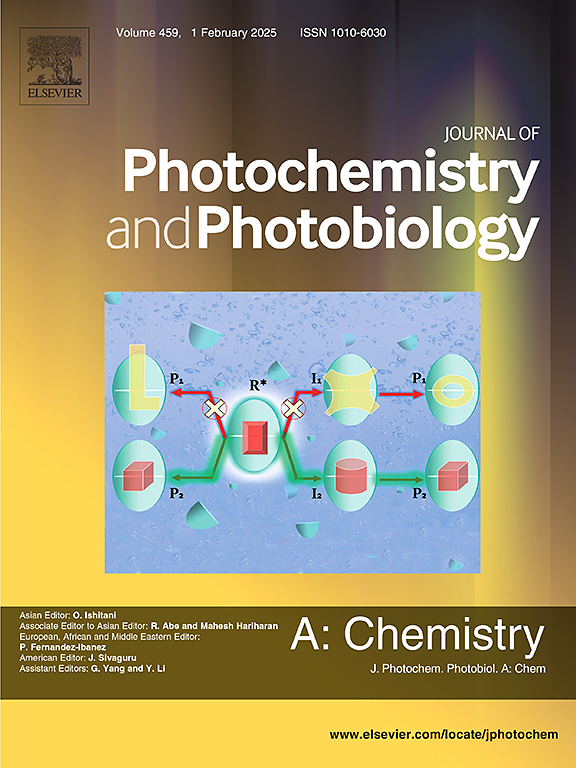Sought gold, found a diamond: Outstanding photocatalytic performance of porpholactones
IF 4.1
3区 化学
Q2 CHEMISTRY, PHYSICAL
Journal of Photochemistry and Photobiology A-chemistry
Pub Date : 2025-03-17
DOI:10.1016/j.jphotochem.2025.116389
引用次数: 0
Abstract
Expansion of the aromatic system is one of the key tools for controlling of the photocatalytic activity of porphyrin sensitizers. In the present work a conventional approach towards panchromatic pyrazine-fused porphyrin dimers by aerobic oxidation 2,3-diaminoporphyrins was revealed. The photoactivity of a set of such π-expanded porphyrins in oxidation of organic sulfides was investigated. The formation of a porpholactone by-product in the synthesis of diporphyrins with hindered meso-substituents was observed, which unexpectedly showed outstanding photocatalytic activity. Moreover, the preparation of the In(III) porpholactone complex allowed further efficiency improvement due to heavy metal effect and made it possible to exceptional turnover numbers (TON) of the photocatalyst above 830 000. The fact made the In(III) porpholactone the most effective photocatalyst for the sulfoxidation among described analogues.

求助全文
约1分钟内获得全文
求助全文
来源期刊
CiteScore
7.90
自引率
7.00%
发文量
580
审稿时长
48 days
期刊介绍:
JPPA publishes the results of fundamental studies on all aspects of chemical phenomena induced by interactions between light and molecules/matter of all kinds.
All systems capable of being described at the molecular or integrated multimolecular level are appropriate for the journal. This includes all molecular chemical species as well as biomolecular, supramolecular, polymer and other macromolecular systems, as well as solid state photochemistry. In addition, the journal publishes studies of semiconductor and other photoactive organic and inorganic materials, photocatalysis (organic, inorganic, supramolecular and superconductor).
The scope includes condensed and gas phase photochemistry, as well as synchrotron radiation chemistry. A broad range of processes and techniques in photochemistry are covered such as light induced energy, electron and proton transfer; nonlinear photochemical behavior; mechanistic investigation of photochemical reactions and identification of the products of photochemical reactions; quantum yield determinations and measurements of rate constants for primary and secondary photochemical processes; steady-state and time-resolved emission, ultrafast spectroscopic methods, single molecule spectroscopy, time resolved X-ray diffraction, luminescence microscopy, and scattering spectroscopy applied to photochemistry. Papers in emerging and applied areas such as luminescent sensors, electroluminescence, solar energy conversion, atmospheric photochemistry, environmental remediation, and related photocatalytic chemistry are also welcome.

 求助内容:
求助内容: 应助结果提醒方式:
应助结果提醒方式:


